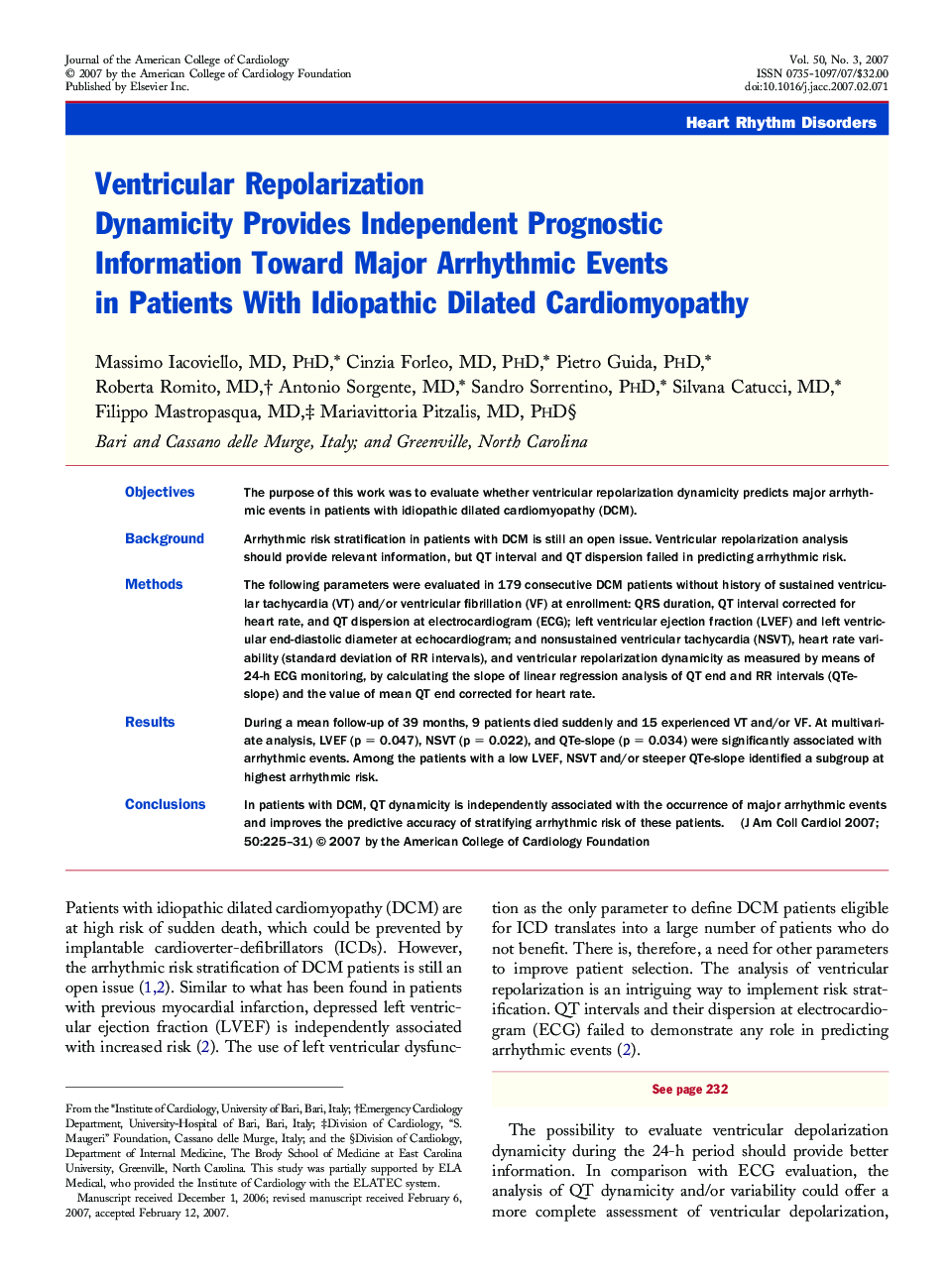| Article ID | Journal | Published Year | Pages | File Type |
|---|---|---|---|---|
| 2954860 | Journal of the American College of Cardiology | 2007 | 7 Pages |
ObjectivesThe purpose of this work was to evaluate whether ventricular repolarization dynamicity predicts major arrhythmic events in patients with idiopathic dilated cardiomyopathy (DCM).BackgroundArrhythmic risk stratification in patients with DCM is still an open issue. Ventricular repolarization analysis should provide relevant information, but QT interval and QT dispersion failed in predicting arrhythmic risk.MethodsThe following parameters were evaluated in 179 consecutive DCM patients without history of sustained ventricular tachycardia (VT) and/or ventricular fibrillation (VF) at enrollment: QRS duration, QT interval corrected for heart rate, and QT dispersion at electrocardiogram (ECG); left ventricular ejection fraction (LVEF) and left ventricular end-diastolic diameter at echocardiogram; and nonsustained ventricular tachycardia (NSVT), heart rate variability (standard deviation of RR intervals), and ventricular repolarization dynamicity as measured by means of 24-h ECG monitoring, by calculating the slope of linear regression analysis of QT end and RR intervals (QTe-slope) and the value of mean QT end corrected for heart rate.ResultsDuring a mean follow-up of 39 months, 9 patients died suddenly and 15 experienced VT and/or VF. At multivariate analysis, LVEF (p = 0.047), NSVT (p = 0.022), and QTe-slope (p = 0.034) were significantly associated with arrhythmic events. Among the patients with a low LVEF, NSVT and/or steeper QTe-slope identified a subgroup at highest arrhythmic risk.ConclusionsIn patients with DCM, QT dynamicity is independently associated with the occurrence of major arrhythmic events and improves the predictive accuracy of stratifying arrhythmic risk of these patients.
